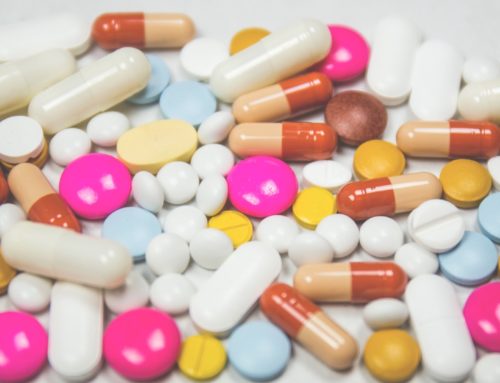There is a lot of information on food out there — like A LOT a lot. I know this because I write some of it, and certainly consume just as much, whether it’s through nutrition courses, diet and lifestyle books, or my favourite foodie recipe blogs.
The tricky thing is that it can be impossibly hard to sift through the pages upon pages of information and decipher exactly what is going to benefit you most in the long-term. I emphasize the phrase ‘long-term’ here because healthy living is not, and will never be an over-night process, a quick fix, or a fad diet.
“Of all the knowledge, that most worth having is knowledge about health! The first requisite of a good life is to be a healthy person.” — Herbert Spencer
So, instead of making recommendations on what you should or should not be doing in your life, this article is designed to teach you how to do exactly what you’re currently doing — but better!
Here Are 8 Ways to Hack Your Nutrition:
- Darker/Bolder Colour = Higher Antioxidant Content
It’s relatively common knowledge that a colourful diet is a healthy one (skittles, sadly, do not count!), but one of the prime reasons this is true relates to something referred to as antioxidants.
Research has shown that diets high in antioxidant-rich foods appear to protect the heart against stroke, decrease plaque buildup within the arteries, reduce blood pressure and general inflammation, and also contribute to clearer skin (1). So how do we know which foods are best?
Well, the presence of antioxidants in our food is precisely what prevents them from turning brown when exposed to the oxygen in the air (consider apples and bananas for instance — two fruits with a relatively low antioxidant content when peeled). Fruits such as mangoes and strawberries, on the other hand, will retain their bright colour even after slicing.
Luckily for us, colour is an excellent indicator of total antioxidant capacity (TAC), with darker shades of red, purple, and blue directing relating to greater levels of anthocyanic antioxidants (2). Purple onions beat out white ones, red grapes trump their green counterparts (this is also true for red wine versus white), and the darker the berry you buy, the more of a protective punch you’ll be packing.
2. Frozen Fruits And Vegetables Are Comparable To Fresh
Planning your meals around the fruit and vegetables that are currently in-season is not always as easy as it sounds, but there are a few reasons you might want to consider taking a gander down the frozen aisle.
Because most frozen fruits and vegetables are processed at peak ripeness within hours of being harvested, the intensity of their flavour is largely preserved, and research has shown that the freezing process also helps to prevent any nutrient loss (3).
In this way, opting for frozen whole-foods instead of canned, or out-of-season fresh produce, ensures that you’re getting all the same benefits as before, but with the added convenience of storing everything in your freezer for an indefinite amount of time.
3. Grapefruit Can Have Dangerous Effects On Certain Medications
Although grapefruit can typically be regarded as a healthy citric addition to any diet, it’s necessary to note that this potent fruit has a very high ability to interfere with particular medications. Currently, it’s estimated that there are more than 85 common prescribed drugs that have been known or predicted to interact negatively with grapefruit through the impairment of the metabolism (4).
There is an enzyme known as CYP3A4 that is needed in order to break down (metabolize) a wide variety of drugs within the small intestine of the body. Interestingly enough, grapefruit juice has the ability to block the action of this vital enzyme, thereby meaning that less of the drug can be processed, and a higher dosage is allowed to enter into the bloodstream.
Too much of any good thing is usually a bad thing, and certainly, where medications are concerned, this holds true. Because the amount of the CYP3A4 enzyme present in an individual’s intestine will vary from person to person, it is important to understand that these effects may vary from person to person and drug to drug (5).
4. The Skin Of Fruits And Vegetables Usually Contain The Highest Concentration Of Nutrients
In a study comparing the beneficial effects of peeled versus unpeeled apple consumption, it was found that individuals consuming the unpeeled apples showed significantly higher levels of flavonoids within the bloodstream after only a few hours, as well as lower blood pressure and improved arterial function (6).
Flavonoids are a specific type of phytonutrient that have been linked with a wealth of beneficial effects within the body, with other types of skin offering amino acids, high concentrations of necessary vitamins, and not to forget the added fibre.
Other examples of fruits and vegetables that offer a nutritional boost when eaten whole versus peeled include potatoes, carrots, eggplant, kiwis, peaches, tomatoes, and even watermelon (I can’t personally attest to this last one, although adding the rind to a smoothie seems to be the way to go about this!).
5. Buy Healthier Products By Comparing The Sodium Content (in mg) To The Serving Size Or Calories
All processed foods are not equal, and added sodium is one of the worst culprits when it comes to sabotaging your efforts to reduce your risk of death and disease. While eliminating all processed foods may be the perfect solution, it’s just not always practical.
Here are a couple of nifty ways to ensure a reasonable degree of healthiness during the buying process:
First, you can aim to only purchase foods that boast fewer milligrams of sodium than there are grams per serving — i.e. if the label says 100g serving size, the sodium content should be kept under 100mg.
Alternatively, as the typical adult averages around 2,200 calories per day, and the FDA recommended daily value for sodium consumption is around 2,300mg for healthy individuals under 50, you can compare the sodium content on the label to calories per serving and achieve the same thing. Thus, 500mg of sodium in a food that has only a 300 calorie serving size, has a ratio of sodium to energy content that would not be considered optimal (7).
6. From A Nutrition-Per-Dollar Standpoint, Organic Might Not Necessarily Be Better
There are a few reasons you might prefer organic foods — there are fewer pesticides, for one — but in terms of nutrition, what difference does it really make?
One research study found that extracts from organically grown fruits actually suppressed the growth of cancer cells in Petri dishes significantly better than non-organic ones (8). Thus, it makes sense that judging by antioxidant properties alone, organic fruits and vegetables can typically be considered anywhere from 20–40% healthier.
The catch? Organic food also comes with a higher price tag, which means from a nutrition-per-dollar standpoint, you might be missing out. If buying non-organic produce, however, meant that you could afford to buy more in terms of quantity, or similarly, more in terms of diversification (eating a wider range of different fruits and veggies), then science says that might be the better option for you!
7. Cruciferous Vegetables Produce A Highly Nutritious Enzyme If You Chop Them 45 Minutes Before You Cook Them
It’s only fair that this vegetable hack wins a spot on this list because nothing exactly requires less effort than sitting by and doing….well, nothing.
You may have read about this before in one of my prior articles, The 15 Foods You Should Be Eating Every Single Day and Why, because cruciferous vegetables are one of the healthiest things you can put on your plate. However, in order for the full benefits of this food group to be reaped, the enzyme myrosinase much be given enough time to adequately transform the glucosinolates present in foods such as broccoli, cauliflower, Brussels sprouts, and collard greens, into the powerful disease-fighting compound sulforaphane.
Myrosinase begins this roughly 45-minute process when any cruciferous vegetable is chopped, chewed, or crushed in any way, but — as a result of its high sensitivity to heat — transfer your vegetables into a boiling pot of water too soon, and any chance of sulforphane formation is immediately lost.
There are three prime solutions to this quandary:
- Eat all your cruciferous vegetables raw.
- Chop your vegetables and leave them to work their enzymatic magic for 45 minutes before you cook them.
- Add a pinch of ground mustard seed to your cruciferous vegetables after cooking.
The last option works without any time-management or patience required because mustard — also being a member of the cruciferous family — contains high levels of in-tact myrosinase that help quadruple the bioavailability of sulforaphane in your food, even after the cooking process (9).
8. Increase Your Prebiotic Intake By Eating Leftover Starches
There are three classifications of prebiotic, all of which help to produce healthy compounds in our gut that are responsible for maintaining the lining of our gastrointestinal system, reducing inflammation, preventing chronic disease, and regulating our emotions (also see 6 Foods That Might Be Negatively Affecting Your Maximum Happiness).
These three forms of prebiotic are prebiotic fibre, polyphenols, and resistant starch. Resistant starch is particularly fascinating because of its unique ability to multiple through a process referred to as starch retrogradation.
When foods such as white potatoes, white rice, pasta, and even legumes are cooked and allowed to cool — no matter whether they’re later reheated, or not— the resistant starch content is roughly tripled (10). All the more reason to meal prep and eat your leftovers 😉
Alexandra Walker-Jones — December 2020
Article Sources:
- Cassidy A, Rogers G, Peterson JJ, Dwyer JT, Lin H, Jacques PF. Higher dietary anthocyanin and flavonol intakes are associated with anti-inflammatory effects in a population of US adults. Am J Clin Nutr. 2015;102(1):172–81.
- Cömert, E. D., Mogol, B. A., & Gökmen, V. (2020). Relationship between color and antioxidant capacity of fruits and vegetables. Current Research in Food Science, 2, 1–10.
- Favell, D. J. (1998). A comparison of the vitamin C content of fresh and frozen vegetables. Food chemistry, 62(1), 59–64.
- Bailey, D. G., Dresser, G., & Arnold, J. M. O. (2013). Grapefruit–medication interactions: Forbidden fruit or avoidable consequences?. Cmaj, 185(4), 309–316.
- U.S. Food And Drug Administration. (2020). Grapefruit Juice and Some Drugs Don’t Mix. FDA
- Rees A, Dodd GF, Spencer JPE. The Effects of Flavonoids on Cardiovascular Health: A Review of Human Intervention Trials and Implications for Cerebrovascular Function. Nutrients. 2018;10(12).
- U.S. Food And Drug Administration. (2020). Sodium in Your Diet. FDA
- M E Olsson, C S Andersson, S Oresson, R H Berglund, K E Gustavsson. Antioxidant levels and inhibition of cancer cell proliferation in vitro by extracts from organically and conventionally cultivated strawberries. J Agric Food Chem. 2006 Feb 22;54(4):1248–55.
- Okunade, O., Niranjan, K., Ghawi, S. K., Kuhnle, G., & Methven, L. (2018). Supplementation of the diet by exogenous myrosinase via mustard seeds to increase the bioavailability of sulforaphane in healthy human subjects after the consumption of cooked broccoli. Molecular nutrition & food research, 62(18), 1700980.
- Sonia, S., Witjaksono, F., & Ridwan, R. (2015). Effect of cooling of cooked white rice on resistant starch content and glycemic response. Asia Pacific journal of clinical nutrition, 24(4), 620.





